An apple in Newton’s head triggered an entire revolution in Physics. And a message saying “QWERTY” marked the beginning of email.
Digital banner advertising had its Eureka moment of inception as well–and it also has changed quite a bit since it first came about.
On October 27th 1994, Wired Magazine (back then hotwired.com) published the first banner ad ever: “Have you ever clicked your mouse right here? You will.”

Pretty? Not quite, not by today’s standards at least–but it worked. The ad saw a staggering 42% click-through-rate and marked the beginning of a whole new era in advertising. Because, you see, some of the best scientific technological advancements had humble beginnings.
The Banner Advertising Industry
The world of banner advertising is far richer (and more complex) than it was in ‘94. Facebook banners, Instagram sponsored ads, TikTok, Google Display Network, programmatic advertising–there’s literally tons of information that could be written about the banner advertising industry today.
It does make things more complicated, but don’t lose your head over it. Once you get the banner advertising basics, everything else is just… technicalities. Important ones, but still–technicalities.
The good news? It’s worth it. Display advertising continues to gain ground in front of search ads and other formats, as shown by the following graph from eMarketer:
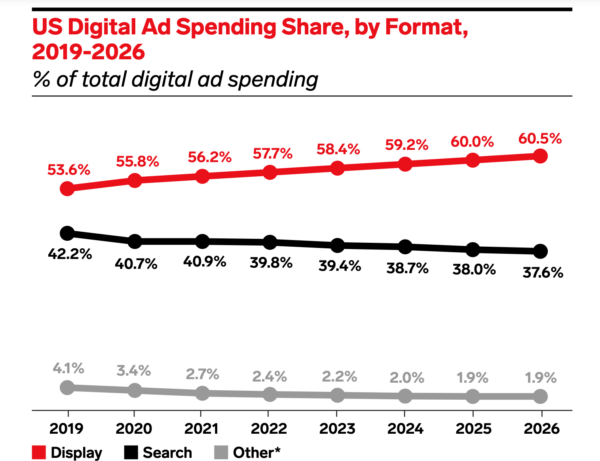
By 2026, more than 60% of all online ads will come in a display format.
So, are you ready to jump on board and tap into the amazing power of banner advertising?
Let’s begin with the basics:
1. What Is Banner Advertising? What Are Banner Ads?
Banner advertising (also called display advertising) uses graphic banners to capture the attention of a target audience and convert them into buyers, subscribers, or followers.
To narrow down a bit, a banner ad (or a web banner) is an advertisement displayed in a web page. It can come in a multitude of formats, such as static images (JPG, PNG, GIF) or multimedia/animated objects (like HTML5 or video ads).
Animated banner ads are gaining more popularity, as they tend to draw more attention from users and thus, perform better than static banners.
Google Ads is one of the easiest ways to create and distribute banner ads on sites in the Google Display Network (GDN). However, it is worth noting that this is not the only way to publish banner ads.
There are many benefits to banner advertising:
- Drive brand awareness. You can grow your brand awareness using banner ads so people can easily recognize your product or service. Brands like IBM, Apple, Target, or Nike use banner ads to grow their business through brand advertising.
- Generate leads. Online banner advertising is a great way to build your user base.
- Retarget your audience. If somebody came on your website but left without signing up to your product or newsletter, you can retarget them with banner ads.
2. How Do Web Banner Ads Work?
Essentially, online banner ads work the same way traditional advertising does. However, they are delivered online (on websites, social media channels, etc.), which also means they are clickable.
Banner ads are intended to generate traffic to a website by linking to it. Also, web banners can function as regular, print advertisements: inform, notify about a new product, increase brand awareness, and so on. Most banners are clickable, so the main two functions of online banner advertising are to draw attention and make people want to click on them.
Generally, banner ads are placed on high traffic websites that offer interesting or useful content. Once clicked, they will lead the user to a landing page created with the purpose to convert them: make them sign up for a newsletter, download a whitepaper, or buy a product, for example.
Besides the traffic of the website they’re placed on, there are other important aspects to be taken into consideration when choosing a website to advertise on. For example, you should always aim to advertise on websites close to your industry niche.
The method by which banner ads are placed on websites is called programmatic advertising–a technology that allows advertisers to bid on online real estate during the time it takes for a banner ad to load.
3. Are Banner Ads Effective?
Short answer is yes, banner ads are effective, and there are two main reasons for this:
- Easy to measure the impact. Unlike traditional advertising, banner advertising can be measured (e.g. you can measure the click-through rate, cost per lead, cost per click, and so on). Generally, CTR is considered to be a good indicator of an ad’s success–the higher the CTR, the better the ad is performing.
- Draw users’ attention. Unlike search ads, they are hard to ignore. Most people are bombarded with information and brand exposures every day, so we have trained our brains to ignore everything that doesn’t really get our attention. Well-done banner advertising manages to bypass this newly-found brain program we’ve built for ourselves, and thus, they manage to capture attention and lead consumers to take action.
It’s important to keep in mind that banner ads are only as effective as you make them be. To make sure your banner ads work, you need to invest in good creatives, good targeting, and a good sense of when and how to test things out to ensure the best creative optimization possible.
4. Standard Banner Sizes for Advertising
When you browse the Internet, it’s likely for you to stumble upon all kinds of banners in all kinds of sizes. Luckily for you though, you don’t have to create an infinite number of ad size variations: there are standard banner sizes agreed on by the Interactive Advertising Bureau:
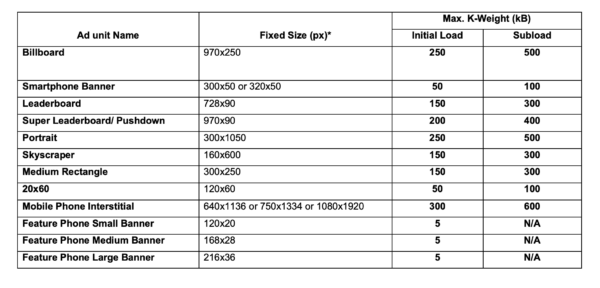
5. How to Create a Banner for Advertising
Easy! You don’t have to be a professional designer to design an ad. You can create static or animated banner ads without any coding skills. It’s easy to learn how to make a banner.
To make sure your ad is effective, there are some simple principles you should consider when designing it:
- Who is your main target and what do you want from them? Before you design a banner ad you need to know who is your core target audience and what you want from them. Maybe you want them to land on your website, buy your limited sale product, or try your service for free. Think about that!
- What is your value proposition? Knowing what your value proposition is will help you write the ad copy and incorporate an attractive, enticing call to action.
- Where will you publish your ad? Will you publish it on Google’s Display Network or on other programmatic advertising networks (such as AdRoll)? Knowing this will help you make sure all the technicalities are in order and that you create a design that fits well within the platform you’re publishing it on.
- Pay attention to the standard web banner ad size. Because the publishers are usually using the standard banner ad sizes on their websites. So, if you pick another size you limit the reach of your banner ad campaigns. For example, Google has their own accepted banner ad sizes and they will not publish anything that’s not within the specs.
- Use readable fonts. You want the user to understand what you want to offer and what they can get if they click on your banner ad. Some of the best ad fonts to use include Roboto, Montserrat, Arial, Open Sans and Oswald.
- Use high-quality photos. Very low-quality banner ad photos and images can create mistrust between the brand and the user.
- Use your brand colors. If you want to design professional banner ads and you want people to recognize your brand on the internet I recommend you to stay close to your brand’s color palette.
- Don’t overcrowd your banner ad. The simpler the banner ad the easier you can communicate the right message to your audience.
- Don’t forget to use a branding element (logo, company name, or website address).
It doesn’t matter how big you are in your industry, you need to use one of your branding elements to show the user that your company is behind that banner ad.
7. Banner Ad Costs
Banner advertising can be quite cost-effective, depending on the kind of promotion you’re trying to do. The cost can vary from a few cents per click to hundreds of dollars per click and it all depends on the type of site you’re advertising on and the target audience you are trying to reach.
Essentially, programmatic advertising will allow you to bid on the internet space you want to get, so you can determine your budget and goals. It is worth noting, however, that in the case of very competitive bids, a low budget might not yield the results you’re looking for.
There are multiple types of banner ad costs:
- Cost per mille (CPM). This type of cost is mostly used when you don’t have a goal in mind and just want to create brand awareness. It means that you will pay a fixed rate for every 1,000 impressions (views) of your banner ads.
- Cost per click (CPC). The cost is calculated by the number of clicks you get on your banner ad. You will be paying a fixed price for each click, according to your budget.
- Cost per action (CPA). This is the cost of an action taken by a visitor that lands on your website. The price you pay per lead, purchase or sign up will depend on the type of action taken. A successful banner ad campaign will depend on the right combination of design, content and placement so pay attention to all these elements and you will get the results you want.
- Cost per view. This is when you pay for each view of your ad. No matter what type of campaign you’re running, it’s important to track the performance of your banner ad to get the insights you need and optimize it accordingly.
Conclusion
Banner advertising can be a real winner for your business if you know how to optimize it and get the best out of it. Virtually every big brand out there has put out at least one banner ad in the last 12 months–and with more than $225 billion forecast to be spent on banner advertising in 2027, the trend is here to stay.
What about you? Will you invest in banner advertising? Let us know in the comments below.
Banner Advertising Basics: FAQs
What are 4 types of advertising?
The four main types of advertising include display, video, mobile, and native advertising, each with its own set of advantages, disadvantages, specific costs, and so on.
Why do companies use banners?
Companies use banners to promote their products and services, increase brand awareness, and drive traffic to their website or landing page. Banner ads combined with other forms of advertising can make brands easier to recognize and thus, more trustworthy in consumers’ minds. Furthermore, some banner ads might be conversion-driven too (such as banner ads advertising discounts on Black Friday, for example).
How do banners help a business?
Banners can help a business by providing exposure to potential customers, helping them build trust and credibility in the brand, increasing website traffic and overall leads, helping promote products/services or incentivizing consumers to buy a product or a service.
What are the types of banners?
The main types of banners include Page Banners, Half Page Banners, Leaderboard Banners, Skin/Wallpaper Banners and Skyscraper Banners. Each type of banner has its own sizing requirements, so make sure to adhere to those.
What are the 3 types of ads?
The three main types of ads in the digital world include display advertising, search advertising, and social media advertising.
What is the most popular banner?
The 300×250 (medium rectangle) banner size is considered to be one of the most popular ones because it’s easier to embed in content and at the end of articles, while providing enough space for advertisers to craft a compelling message.
Do banner ads really work?
Yes, banner ads really work. They can help you drive more brand awareness, increase sales, and drive more traffic to your website or landing pages. Compared to search advertising, banner ads have been gaining a lot of popularity in the last few years. According to the aforementioned eMarketer research, the trend will continue for the foreseeable future as well.
What are the benefits of banner ads?
Banner ads have many benefits, including (but not limited to):
- They help with pre-sale exposure to potential customers
- They help increase brand awareness and trust
- They drive more traffic to your website or landing page
- They can incentivize visitors to purchase a product/service
- They are affordable compared to other marketing channels
What is another name for banner ads?
Banner ads are also known as display ads because they are frequently published using the Google Display Network or other platforms for programmatic display advertising.
What makes a banner good?
A good banner will draw attention, be easy to understand, and feature a compelling call-to-action. It should also be optimized for the intended audience and match with the overall branding and style of the company that uses it. A good banner ad should also mix well with the environment of the website it’s displayed on.




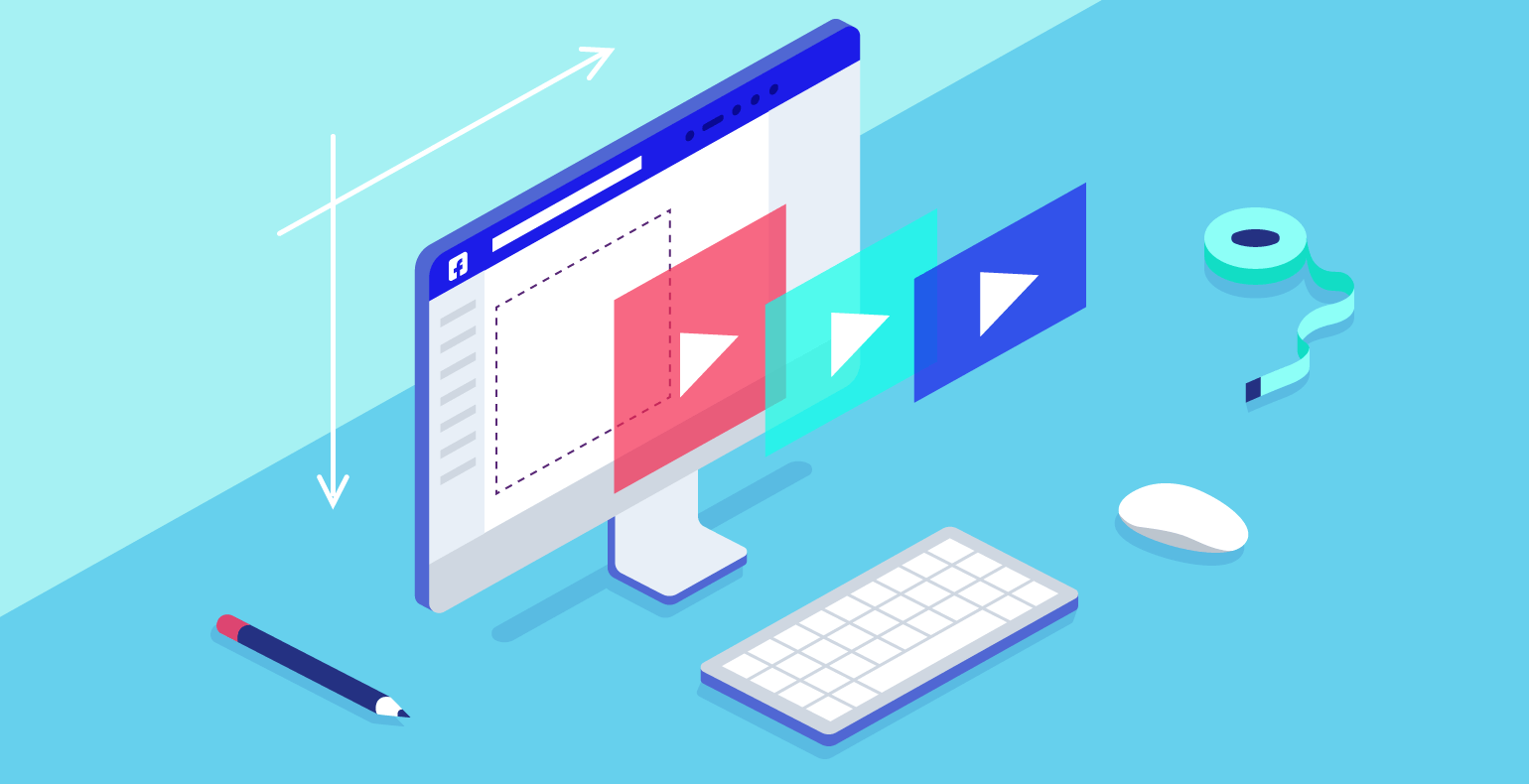
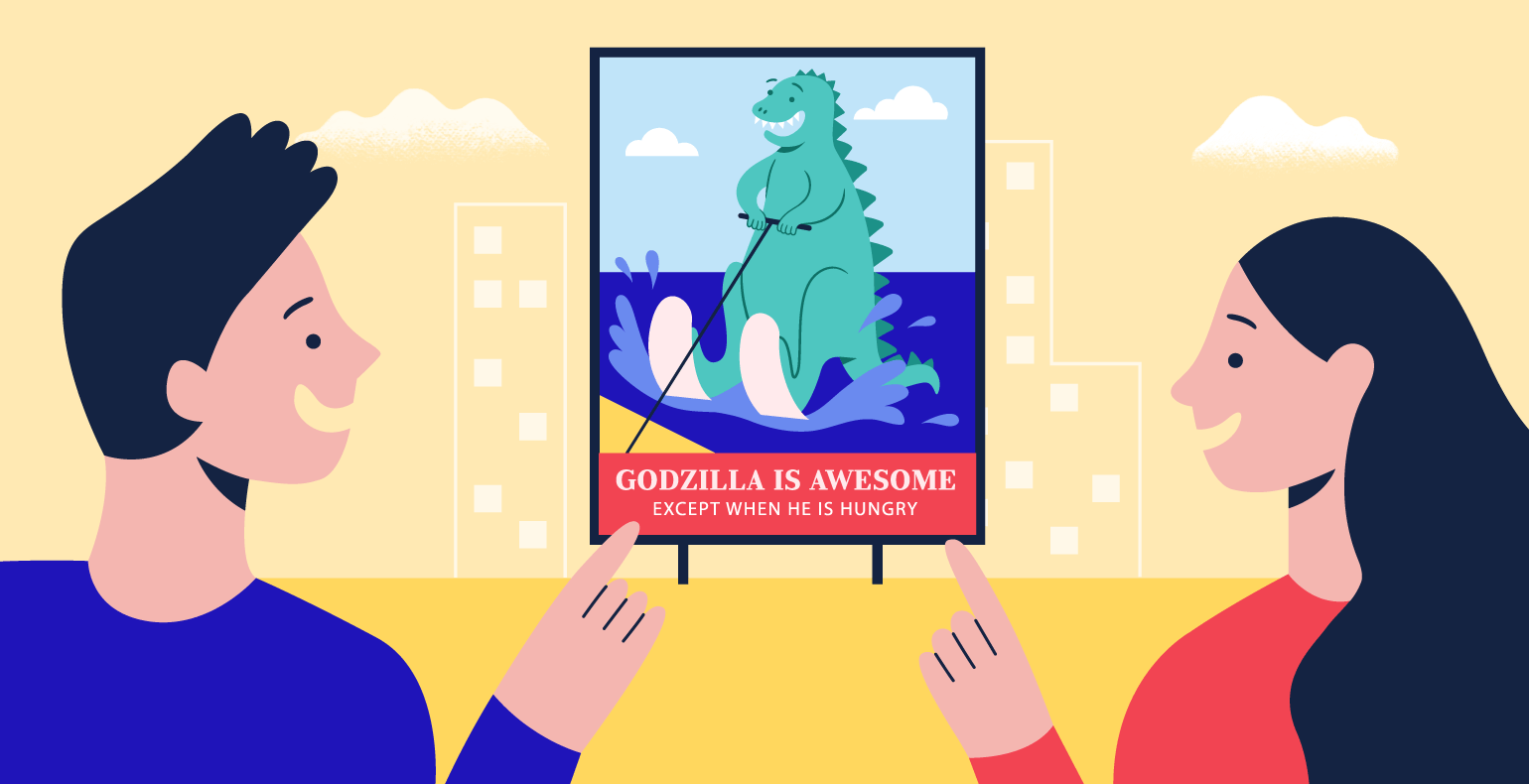


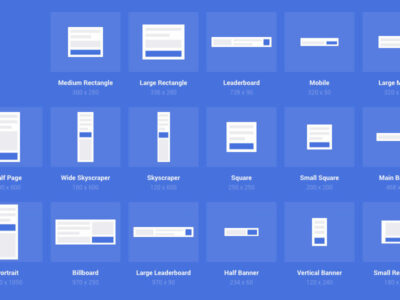

Nice article post.
Thank u, i learn a lot.